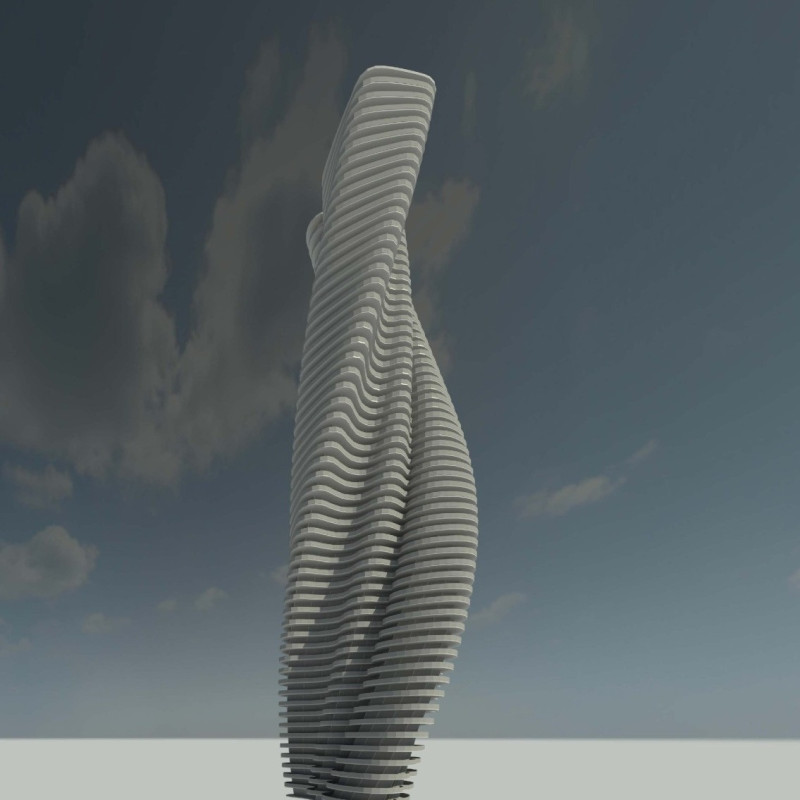5 key facts about this project
The Kurt Tower is an architectural endeavor that combines sustainability, community interaction, and multifunctional spaces in a contemporary urban context. Inspired by wind turbines, the design communicates a sense of freedom and lightness. This building aims to create opportunities for its occupants to connect with one another while visually integrating into the surrounding environment.
Community Engagement
The design features a ripple effect that promotes visual connections between different levels of the building. This approach allows people on upper floors to see and engage with those below them, encouraging social interactions. By shifting its shape, the structure addresses privacy concerns while still fostering an open atmosphere. The design seeks to create an environment where individuals can build relationships and strengthen community ties.
Sustainability Approach
A focus on sustainability drives many of the building's features. Solar panels are designed to capture sunlight, supporting the use of renewable energy. The project also includes systems for collecting rainwater and cool air from outside, enabling effective climate control within the building. These sustainable elements aim to lessen the ecological footprint and enhance the living conditions for those who occupy the space.
Multipurpose Functionality
The Kurt Tower is intended to be adaptable to the varying needs of its users. This flexibility allows it to serve multiple functions across time, responding to changes in community dynamics and user requirements. Such adaptability ensures the building remains relevant in a fast-paced urban setting, adjusting to the evolving needs of its occupants.
Balconies are an important feature throughout the design, providing transitional spaces that facilitate interactions between people and connect them to the outdoors. These areas enhance the functionality of the building, blending private space with communal experiences. The integration of these design elements draws attention to the importance of human connection in an urban environment.



















































